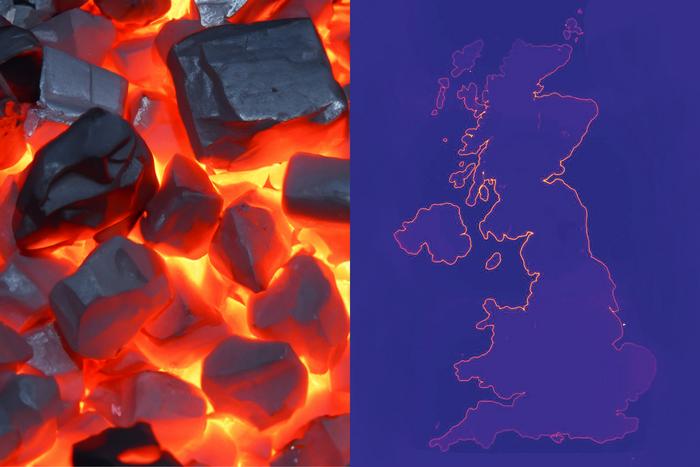When a piece of metal is made to glow, its colour depends solely on its temperature. The material, the geometry, the structure of its surface – none of these details matters. If every point on the metal rod has the same temperature, then every point emits exactly the same colour spectrum.

Credit: TU Wien
When a piece of metal is made to glow, its colour depends solely on its temperature. The material, the geometry, the structure of its surface – none of these details matters. If every point on the metal rod has the same temperature, then every point emits exactly the same colour spectrum.
But that does not always have to be the case: the research team of Prof. Stefan Rotter (Institute of Theoretical Physics, TU Wien) has been working for many years on controlling and influencing the behaviour of waves using innovative methods. Together with the team led by Coskun Kocabas from the University of Manchester, they have now been able to show: Using certain tricks that are closely related to the mathematical field of topology, thermal radiation can be precisely controlled, so that it is only emitted at very specific points and nowhere else. This astonishing result has now been published in the journal ‘Science’.
Material properties and topology
Many properties of a material (for example, the way in which it can absorb light or conduct electricity) depend on subtle details: on tiny structures, on the presence of very specific atoms. Even small disturbances or impurities can often cause a material sample to behave completely differently than expected.
“In practice, of course, you want to have material properties that are as stable as possible and that are not immediately destroyed by small changes,” says Stefan Rotter. “That’s why special attention has recently been paid to the so-called topological properties of materials.”
Topology is a branch of mathematics that deals with the fundamental properties of geometric objects. For example, a donut is topologically different from a bread roll – because a donut has a hole in the centre. You can squeeze or flatten a bread roll, but there is no continuous deformation that turns the bread roll shape into a donut shape. You would have to create a hole for that. We can therefore say that the property of either having a hole or not is stable under minor deformations.
The same phenomenon can also be found in materials research: certain material properties can also be topologically stable – although in materials science, this does not usually refer to our three-dimensional space in which donuts or bread rolls are located, but on more abstract mathematical spaces, describing certain physical properties. Nevertheless, the same applies here: If the property can be defined topologically, then it is stable against disturbances.
The coastline of the British Isles as a heat radiation pattern
“As our joint project has shown, in certain cases the radiation behaviour of objects can also be described topologically,” says Stefan Rotter. “This now allows the development of very special coatings that can be used to control thermal radiation in a way that was previously not possible.”
A combination of certain metal layers creates topological effects, meaning that heat radiation can only escape at very specific points and not at others. “You can therefore restrict the heat radiation to completely arbitrary shapes,” says Stefan Rotter. “Our colleagues from Manchester opted for a map of the British Isles (see corresponding figure). They created a special multi-layer coating: Where land is depicted, the thickness of the top metal layer is different to where the sea is depicted. This special combination now ensures that heat radiation can only be emitted at the boundary between the two – i.e. along the coastline.”
That way, a surface is created that generates thermal radiation, but not at every point in the same way as usual, only precisely at those points that trace the coastline of the British Isles. “Topological effects have already played a huge role in other contexts, as recognised by the 2016 Nobel Prize in Physics,” says Stefan Rotter. “The new aspect of our work is now to apply these concepts to thermal radiation. The experiment now presented is a conceptual proof of these techniques. We are convinced that a whole range of other technically highly interesting effects can be generated.”
Further work is already underway with colleagues from Manchester and Sahin Özdemir from Penn State University in the USA, who were already actively involved in the current project.
Journal
Science
Method of Research
Experimental study
Subject of Research
Not applicable
Article Title
Localized thermal emission from topological interfaces
Article Publication Date
6-Jun-2024



